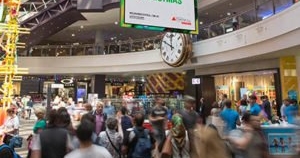Walking through the great halls of NRF this year, it would have been easy to become overwhelmed with the endless supply of new retail tools and technology. But, despite all of the disparate devices and software on display, a central theme emerged for the future of retail: Your customer is your brand. This means that customers have and will continue to have the expectation that every touchpoint and experience they have with a brand will match the brand’s message. The entire operation works in harmony, rather than as a series of independent silos. It can best be described as persistent personalization.
Stores will have mobile POS, order management, CRM, and clienteling platforms that are interactive and can be activated by shoppers’ phones or loyalty cards. Retailers will know who customers are the minute they enter a store and be able to message to them based exclusively on an individual customer’s likes and preferences. Tip to tail, the entire immersive experience is tailored to the customer.
Bringing persistent personalization to life within the retail environment will be accomplished largely through the implementation of digital displays. New LED technology will free retailers to design unique customer experiences. The experience is what will attract the shopper and keep her engaged. Stores that create three-dimensional customer experiences combine interactivity, displays, recognition of the customer, and the product for sale will have on offer an experience that cannot be replicated.
Digital signage can also be a vehicle for offering customers virtual reality, which was another major trend at NRF. Whether on the job or during leisure time, virtual reality will be heading our way in the near future. Stores can use virtual reality through LED displays to change out displays and products on the fly, to highlight the location of best sellers, and overlay sales data.
The good news for brick and mortar retailers in this new and ever-evolving retail climate is that the immersive experiences being created in stores are shaping customer behavior. Retailers with brick and mortar stores will know that when a customer walks into their store, the purchasing intent of the customer is high. While this fact will likely make conversion rates higher, it adds pressure on the retailer have a firm understanding of available inventory. LED displays can be harnessed to help the customer to self-educate perusing available stock or helping them to locate items that might not be immediately available in the store where they are standing. Automated and accurate inventory tracking will become paramount in the retail store of the future.
To find out how LED displays helped to transform Canada’s largest sporting goods retailer SportChek, please check out The Retail Store of the Future.
~Matt Nurre
VP of Global Retail, Nanolumens

